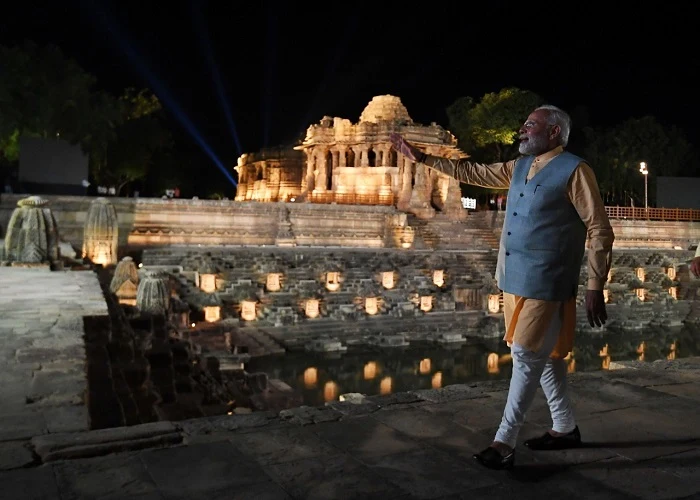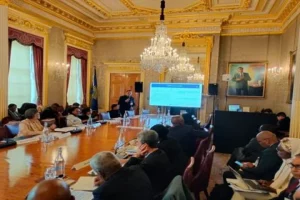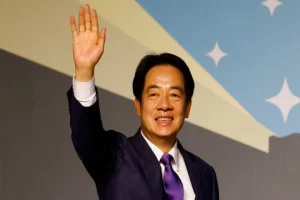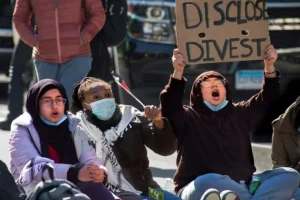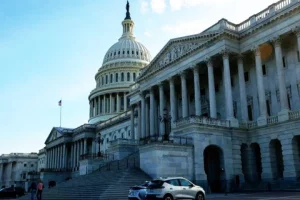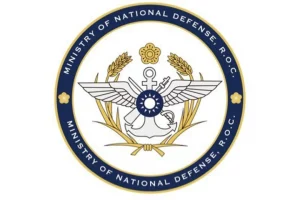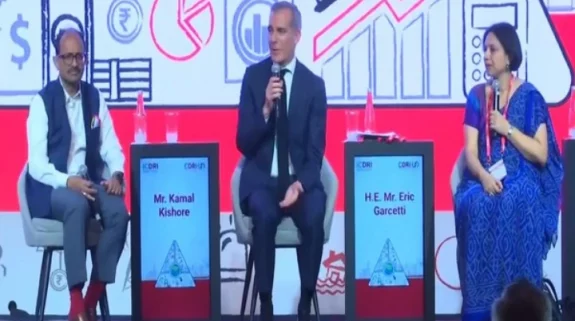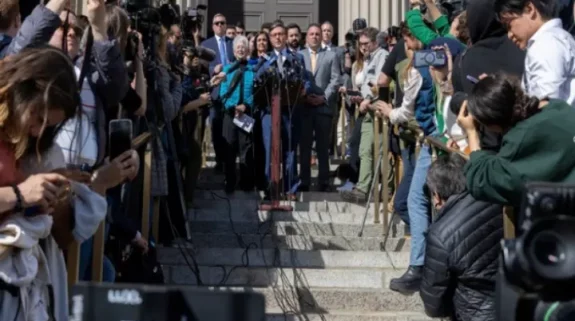The world has been experiencing turmoil and turbulence over the last three years, the likes of which it has not witnessed in many decades in the past. In addition to the many blows that the world faced like the 9/11 attacks on the World Trade Centre towers in New York in 2001 and the international economic crisis in 2007/’08 over the last two decades, the world was buffeted by the Covid-19 pandemic at the beginning of 2020.
This resulted in severe health and economic jolts to the global community. While it was still in the throes of recovering from this crisis, the world was dealt a huge body blow by the Russian invasion of Ukraine a little more than seven months ago. In addition to the disruption of vital supply chains, the world has also had to confront acute shortages and high prices of food, energy and fertilizers. While the developing countries have been the worst to suffer from these unanticipated calamities, the developed countries in Europe, USA and others have also not been spared their serious impact.
In the midst of all this volatility and uncertainty, India has emerged as a beacon of hope for the world. India is today viewed as a partner of choice and indispensable to seeking solutions to some of the most formidable challenges like climate change, economic recovery, healthcare, terrorism and others confronting the world.
While most countries from whom leadership was expected to effectively confront the health and economic threats of the Covid-19 pandemic were found wanting in rising up to the challenge, India managed to convert the unforeseen threats into an opportunity by following bold yet prudent policies. While the whole world, particularly the developed countries, were competing with each other to provide ever larger stimuli to their economies and put more money into the hands of the consumers, India pursued a very measured and balanced policy approach. India has continued to provide essential food items to more than 800 million of its population for more than 2 years to ensure that the decline in the earning capacity of the working population due to the extended lockdowns did not adversely impact upon the survival and well-being of the populace at the bottom of the economic pyramid. Rapid and extensive digitization also contributed immensely to the rapid revival of the economy.
While the protracted shutdowns in the initial months of the pandemic and again during the second phase from March 2021 exacted a heavy price on the economy resulting in a decline of 6.8% in the GDP during financial year 2020-’21, the next year witnessed a sharp rise erasing much of the deficit of the lockdown period. Today India has emerged as the 5th largest economy of the world with the highest annual GDP growth of around 7% amongst major economies of the world. With a total GDP of $3.5 trillion today, the target of $5 trillion does not appear to be far away. By 2027, India is expected to outstrip Germany to become the 4th largest economy in the world.
Several challenges on the domestic front however continue to bedevil India, notwithstanding its impressive performance on myriad fronts. Some of these include the pervasive poverty, inequality, unemployment, gender disparity, education, healthcare and more. Governments, both at the Centre under the leadership of Prime Minister Modi and in different states, are making sustained efforts to improve the quality of life and create a robust environment for entrepreneurship so that job seekers become self-employed and job providers.
On the health front too, India scored high marks by manufacturing 2 vaccines at the beginning of the pandemic viz. Covishield, in collaboration with the AstraZeneca Oxford Company of the UK and Covaxin, an indigenously developed and manufactured vaccine. This enabled India to start vaccination of its population from January, 2021. So far India has administered more than 2 billion vaccines to the eligible segments (12 years plus) of its population. These include one dose to more than 94% of the eligible population and two doses to more than 86% of the eligible citizenry of the country. The third precautionary (booster) dose has also been administered to a significant segment of the eligible population.
In addition, in keeping with its philosophy of ‘’Vasudhaiva Kutumbakam’’ (The Whole World is a Family), India has supplied mostly as a gift and also on a commercial basis, more than 200 million doses of Covid-19 vaccines to above 100 countries.
In the first few months of the pandemic, India was also faced with aggression on its northern borders. If China had thought that India would succumb to its onslaught and prove unequal to the task of stationing more than 50,000 troops and commensurate heavy artillery and equipment on the upper reaches of the Himalayas in eastern Ladakh, it was mistaken. It should have been quite clear to it after the 73-day face off in Doklam in 2017 that India will not compromise with its security and territorial integrity. China however engaged in this adventurous and expansionist exercise in hubris to avenge its ignominious pull back in Doklam but received a decisive and robust response at the Line of Actual Control (LAC) in June, 2020. The tense standoff continues till date.
The Russia-Ukraine conflict started with the invasion of Ukraine by Russia on 24th February and is poised currently at an uncertain and precipitous phase. India has smartly played the rather modest set of cards dealt to it. While taking a decision to not directly criticize Russia for the attack on Ukraine, India in its several Statements at the UNGA and UNSC as well as in other for a, put its full force behind the inviolability of the UN Charter and principles of territorial integrity and sovereignty.
While India may have stopped short of condemning Russia’s actions in as many words, it has made it quite clear that it is unhappy with the continuation of the war and would like it to end through dialogue and diplomacy at the earliest. PM Modi’s comments to President Putin at the SCO Summit in Samarkand, Uzbekistan on 16th September that this is no time for war was a clear enunciation of India’s stand. Similarly, India’s Ambassador to the UN while speaking on India’s abstention in the UNSC on 30th September on the US Resolution to condemn Russia for annexation of the four regions of Ukraine said that India was ‘’deeply disturbed’’ by recent events in Ukraine.
India’s decision to not only continue to buy Russian oil but significantly increase its purchases has sent out a loud and clear message to the West, to Russia and rest of the world including China that India will not compromise on its core strategic interests, in the present case being its energy security and providing energy to its people at reasonable, affordable cost.
It is evident from the developments over the last three years that the US has shown itself unwilling or incapable to lead the world. This is visible both in its disastrous handling of the Covid-19 pandemic and also its chaotic and incompetent withdrawal from Afghanistan last year. China is keen to fill the vacuum which it feels the US’s isolationism has created but its unbecoming conduct at the beginning of the Covid-19 pandemic, its wolf warrior diplomacy, its weaponization of supply chains, its aggressive and expansionist policies and more have made it quite unfit and unsuitable for that role.
In this environment of instability, confusion and disorder, India shines like a lamp of strength, courage and tenacity. As External Affairs Minister Dr S Jaishankar said in his Address at the UNGA on 24th September, India is a voice of reason, has experience and enjoys immense goodwill. This is an opportune moment for India to claim and realize its due place in the comity of nations. This is not to suggest that India can provide leadership to the world at this juncture solely by itself. It can however engage in appropriate partnerships and collaborations to carve out a place for itself which is commensurate with its economic and political stature as well as its cultural and civilizational heritage.
The latest issue of the ‘’Economist’’ surprisingly articulates the same thoughts. It is but rare, if ever, that publications like the Economist, New York Times, The Washington Post and others of their ilk ever see anything positive in India. This is probably on account of the left-liberal ideologies that they harbor and the inaccurate biases and unsubstantiated prejudices against India that they carry. It is also a proof of the low competence, low effort, low accuracy journalism that they engage in. To come back to the ‘’Economist’’, it writes:
‘’ “Democracy, diplomacy and dialogue” — not war — is the answer, he (PM Modi) told Russian President Vladimir Putin as the cameras rolled on Sept. 16, before declaring that the two would speak more about how to bring peace in Ukraine. That assured interaction in Uzbekistan was the latest display of India’s rise under Modi. An ambitious and assertive power, India has become increasingly indispensable in the search for answers to some of the world’s most pressing challenges, from diplomacy to climate change to technology and trade to efforts at diversifying supply chains to counter China.’’
The above statement effectively captures the sweet spot at which India stands today. With the advantages of a democratic setup, a huge demographic dividend, a rapidly expanding, vibrant economy and a peaceful, stable diverse population, India can look forward with hope and confidence to a bright and prosperous future.
(Ashok Sajjanhar is a former Ambassador of India to Kazakhstan, Sweden and Latvia. He is an Executive Council Member at the Manohar Parrikar Institute for Defence Studies and Analysis and President, Institute of Global Studies. Views expressed are personal and exclusive to India Narrative)
Also Read: Modi demolishes two key colonial era relics, deepening foundations of a New India






